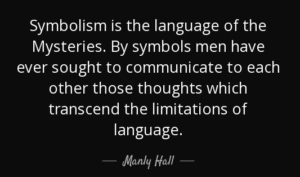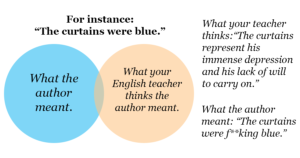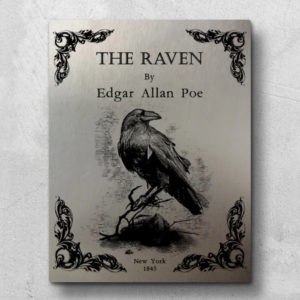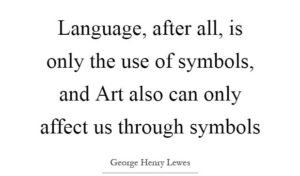What is Symbolism? Explanation with Examples

In literature, art, and other creative works, symbolism signifies the use of unrepealable symbols to represent a deeper meaning. These symbols can be anything from notation and setting to colors and objects. Understanding symbolism and using it powerfully is essential for all writers. In this article, we will get started on exploring what is symbolism and probe into using the same in your writing.
- What is symbolism?
- Understanding the use of symbolism in literature
- How to identify symbolism?
- When to use symbolism?
- Types of symbolism
- Examples of symbolism in renowned works
- Tips to powerfully use symbolism in your writing
What is symbolism?
Symbolism is an suggestive use of elements in books, films, and art to add spare layers of meaning. It can take the form of written words, objects, places, and plane colors that represent ramified concepts or ideas that are not immediately apparent.
The concept of symbolism has been integral to literature for hundreds of years. Authors, poets, and playwrights often incorporate symbols into their works to explore themes on a deeper level.

Symbolism in fiction can range from utopian representations such as a lion symbolizing strength and courage, to touchable items such as the sea representing self-rule and independence.
In today’s pop culture, symbolism provides depth and subtlety to characters’ emotions, thoughts and experiences without stuff overly explicit.
By deciding what an item ways for our protagonist – be it physical or non-physical – symbolism can help create powerful storylines with compelling characters.
Understanding the use of symbolism in literature
Symbolism has been a powerful gravity in literature since its inception, often providing authors with the worthiness to express themselves in ways that transcend their written words.
The use of symbolism has evolved throughout history, from warmed-over mythology and folktales to detailed allegories in modern-day fiction.

Its use is summarized by poet Friedrich Schiller who wrote that “deeply meaningful symbols often express the secrets of nature or of the spirit.”
Symbols are used to explore universal truths and remoter develop a story’s theme or tone. Authors use symbols to enhance characters, emphasize ideas or emotions, explain relationships between characters, or plane serve as commentary on society.
As stories evolve and our understanding of the universe changes, so too will the use of symbolism in literature. It is this worthiness to transform an once powerful art form into something plane increasingly meaningful that makes symbolism such an integral part of literary works.
How to identify symbolism?
To identify the use of symbolism in literature, one should observe which elements in a piece of writing are repeated, and consider what those elements may be referring to or symbolizing vastitude their literal meaning.
Even seemingly insignificant details can be symbolic; for example, when a weft wears an vendible of suit that appears increasingly than once throughout a story, it’s worth considering how and why it is used as a repeating element.

Additionally, examining human relationships and the various interactions between notation can provide remoter insight into the symbolism stuff used.
To engage with symbolism better, taking notes on observations and ideas while reading through work can help develop relevant interpretations.
Connecting observations to larger ideas or events that occur within a work of literature can moreover deepen understanding of the narrative’s symbolism.
Readers must moreover consider their own feelings and thoughts on a symbol’s significance in order to proceeds a clearer insight into its use in the context of a particular text.
When to use symbolism?
Symbolism is a powerful tool when used thus in your writing. To use symbolism effectively, it is important to understand when to employ it.
First and foremost when incorporating symbolism into your writing, it should enhance the narrative without overwhelming it.
As well, the timing of when you use symbolism should not take yonder from the impact when used sparingly and strategically at the right moments. There should be a natural progression and build-up surpassing introducing a symbol that maintains reader engagement.
When using symbols, they can be interpreted differently by variegated readers which makes finding the perfect timing plane increasingly important as you want to ensure you are conveying the desired message or emotional response for any reader who reads your work; ultimately giving them an wits unlike any other piece of writing.
Types of symbolism
Symbolism is a formidable tool used by authors to add layered meaning to their writings.

There are variegated types of symbolism, including visual, personal, and spiritual, which an tragedian can yank upon to create nuance and interest in their work.
Visual Symbolism
Visual symbolism relies on readers’ knowledge of variegated images or ideas associated with their culture—for example, a red rose might symbolize love while a yellow one could signify a dying friendship.
Personal Symbolism
Personal symbols indulge authors to introduce meaningful elements that are increasingly grounded in the notation they create—a weft may have strong emotional reactions to a unrepealable type of jewelry that was gifted to them at a turning point in the story as its own symbol of growth.
Spiritual Symbolism
Finally, spiritual symbolism can include variegated spiritual images or objects evoking themes tied to variegated aspects of faith—such as Dostoevsky’s novel The Brothers Karamazov where the motif of candles serves as a reminder of the importance of light and divinity.
No matter which type of symbolism is used by an author, it can help enrich the world they create for readers and bring remoter depth to the rememberable pieces of literature we enjoy today.
Examples of symbolism in renowned works
Symbols often help to communicate emotion and universal wits in literature. Various renowned authors have brilliantly used symbolism in their writing to add depth and reinvent forms of storytelling.
Classic examples of symbolism
In The Unconfined Gatsby by F. Scott Fitzgerald, the untried light at the end of Daisy’s dock is symbolic of Gatsby’s dream and hopefulness despite the long odds.
Along with the naïve optimism characterized by his fixation with the – otherwise mundane – miracle of color, the symbolism is used to highlight the spirit and passion put along in unattainable pursuits.

Another well-known example is Edgar Allan Poe’s poem “The Raven” which makes use of a raven as a straw of doom, amplifying an intense feeling of despair throughout the work.

Furthermore, each occurrence of the word “nevermore” reinforces an ever-looming future without hope or resolution to unanswerable questions – symbolizing death itself.
A terrific example of symbolism can be found in William Shakespeare’s archetype tragedy, Romeo and Juliet.
In this work, he uses fire as a symbol of strong emotions such as passion, anger, and rage. He moreover utilizes contrasting images like light versus visionless to illustrate good versus evil.
Another archetype example of symbolism is in Herman Melville’s Moby Dick. Here, the unconfined white whale primarily represents death and destruction but moreover gives hope to humanity with its unenduring moments of hope and faith.

Lastly, the Catcher in the Rye by J.D Salinger includes a red trunk carried by Holden Caulfield which can represent his struggle to hold on to his diaper innocence and find a way when home into familiar spaces so he can heal from his traumas.
Examples such as these demonstrate glimpses into variegated aspects of the human psyche – loss, longing, fear – and are examples that are indicative of beautifully crafted examples in renowned works of literature.
Tips to powerfully use symbolism in your writing
When using symbolism in writing, there are a few steps and tips that can really help you create the desired effect.
Tips for constructive use of symbolism
Start by understanding the context of your story and the notation involved—this will be essential to deciding on how to use symbols purposefully.

As you create a plot, alimony in mind what symbols would weightier represent specific emotions throughout your story so that as readers move through it, they know just why unrepealable choices have been made.
Additionally, try to alimony a resulting symbol for each concept throughout the writing; this allows readers to fully understand the point you’re trying to make with each one.
Finally, when crafting notation and backstories, consider if any of those pieces might provide potential symbols for later parts of your narrative. If washed-up powerfully and with purpose, symbolism can add unconfined depth to the storytelling and provide an impactful wits for the reader.
Common mistakes in the use of symbolism
Using symbolism in writing can be tricky and worldwide mistakes often create confusion. For example, when using symbols to represent utopian ideas without unmistakably explaining their meaning, the intended message may get lost in translation.
Additionally, using one symbol for multiple concepts can make the work difficult to interpret and muddle the purpose of variegated symbols.
Moreover, overly relying on stock symbols or symbols with worthier meanings than what you are trying to convey can take yonder from your original message.
How to stave mistakes in the use of symbolism
To stave worldwide errors, it’s important to make sure every symbol holds a specific message and meaning to the text stuff written and be mindful of overusing worldwide symbolism.
It is important to illustrate a deeper meaning or intention overdue each symbol used; this allows readers to connect the dots hands while keeping them engaged in your story.
Using symbolism in your writing will enhance your storytelling on many levels and help you add a unique savor to your writing. Begin experimenting with symbolism and reinvent your writing.
The post What is Symbolism? Explanation with Examples appeared first on Inside Notion Press - Self Publishing Blog.




